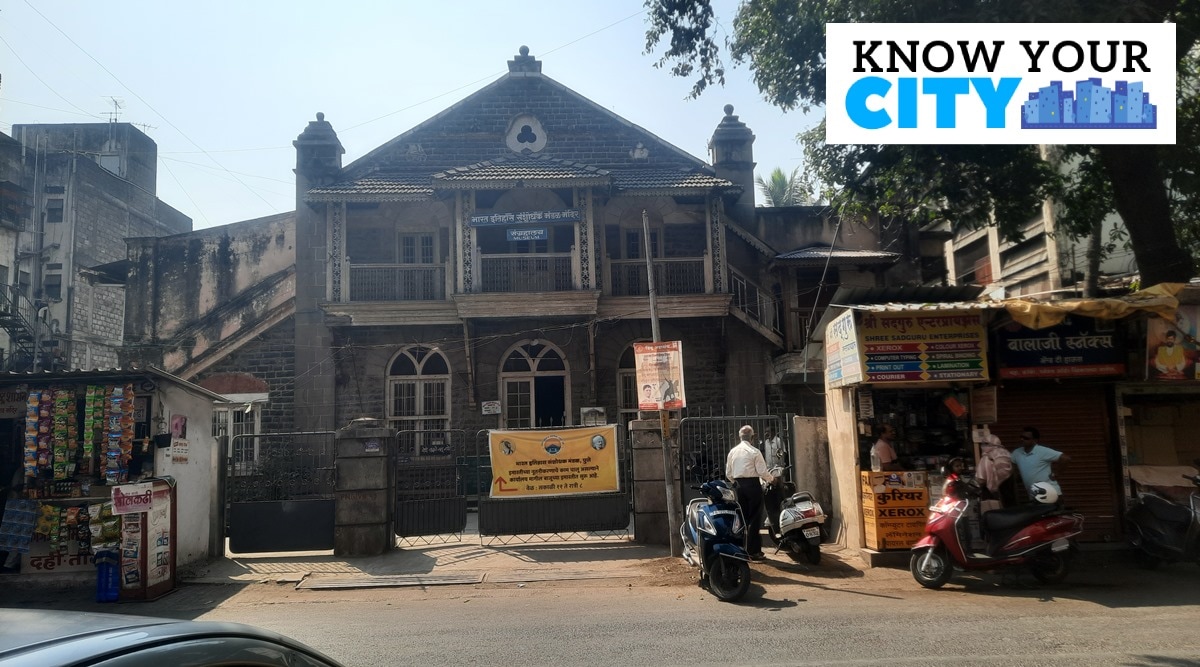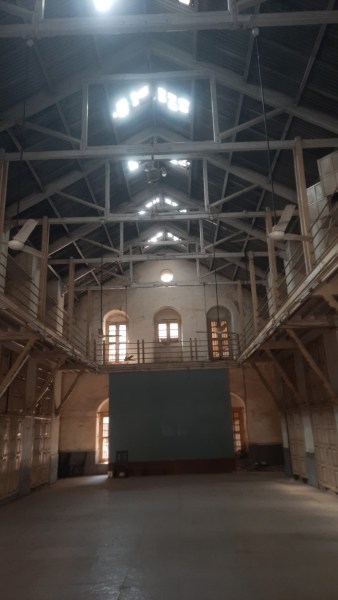 Bharat Itihas Sanshodhak Mandal building in Sadashiv Peth which is currently being restored. (Express photos by Atikh Rashid)
Bharat Itihas Sanshodhak Mandal building in Sadashiv Peth which is currently being restored. (Express photos by Atikh Rashid) Standing tall, witnessing the passage of time through the ages, the forts in Maharashtra are said to be key to understanding the history of the Marathas. Equally important though is the history chronicled on paper, which is painstakingly housed in archives spread across the state.
One such institute, a treasure trove for historical researchers, is the Bharat Itihas Sanshodhak Mandal in Pune.
 The archives boast of a collection of over 52,000 books and 1,600 miniature paintings (Express photo by Atikh Rashid)
The archives boast of a collection of over 52,000 books and 1,600 miniature paintings (Express photo by Atikh Rashid) Tucked away in one of the forgotten lanes in Sadashiv Peth near Perugate, you are bound to miss the Bharat Itihas Sanshodhak Mandal unless you are looking for it. The beautiful stone structure boasts an archive of approximately 15,000 documents, storing everything from tales of bravery to the property sale of noblemen.
Founded in 1910, the Bharat Itihas Sanshodhak Mandal houses lakhs of documents collected from across the country, says senior historian and secretary Pandurang Balkawade. They have 25 volumes on history, more than 25 lakh documents in ‘modi’ (script used by Marathas instead of the Devanagari script used today) and many ‘tamrapat’ (copper plates) dating back to the period of the Rashtrakuta and Vakataka dynasties, says Balkawade.
Along with this, the archives also boast of a collection of over 52,000 books and 1,600 miniature paintings, he adds. The famous manuscript ‘Maaza Prawas’ by Godse Bhatji, which gives a first-hand account of the last moments of the Rani of Jhansi is also currently in the possession of the Mandal, as history aficionados refer to it in Pune.
V K Rajwade set up this archive more than 100 years ago. “Rajwade was a freedom fighter who was active in the country’s struggle for Independence. Macaulay’s education system in British India had completely taken over people’s memory which made them ignorant about our own rich history. Rajwade decided to take a scientific approach and made the archives his life’s ultimate goal to re-instil pride and knowledge about our own rich history in the younger generation,” says Balkawade.
Khanderao Mehendale and Rajwade toured from village to village, collecting donations, as little as a rupee. Procuring personal letters and documents from families spread across Maharashtra was a herculean task but Rajwade and Mehendale convinced them to donate material to make the work of their ancestors known.
“These are private archives, part of which are raised on government money,” says Balkawade. Elaborating on the efforts that went behind building this treasure trove, he says that G H Khare, who was active in the Mandal, was a close associate of Yashwantrao Chavan, the first chief minister of Maharashtra. After Maharashtra was founded, Chavan played a role in getting a building added behind the auditorium to show his appreciation for history.
Helping preserve a slice of the past
The larger the archives, the more difficult it is to maintain these vast stores of knowledge. White termites are known to find their way into the most invaluable records, destroying court proceedings, in one instance. Or a damp wall makes an entire treatise on an ancient dance form turn to pulp.
Balkawade says they get many volunteers, especially from the IT sector, who wish to contribute to the library in their free time. “Once a month, every document is cleaned and maintained. The quality of handmade papers made then is so good and the ink is almost waterproof,” says Balkawade. Paper was manufactured in three places – Sangamwadi, Funneri and Daulatabad – and the manufacturing process ensured the excellent quality of paper produced, he adds.